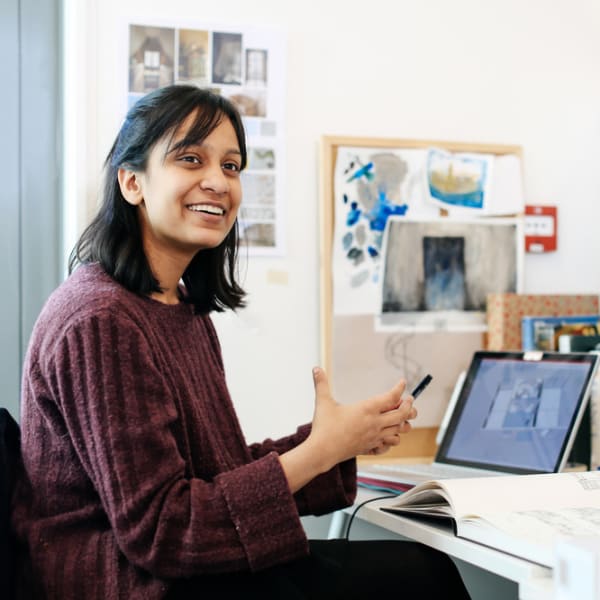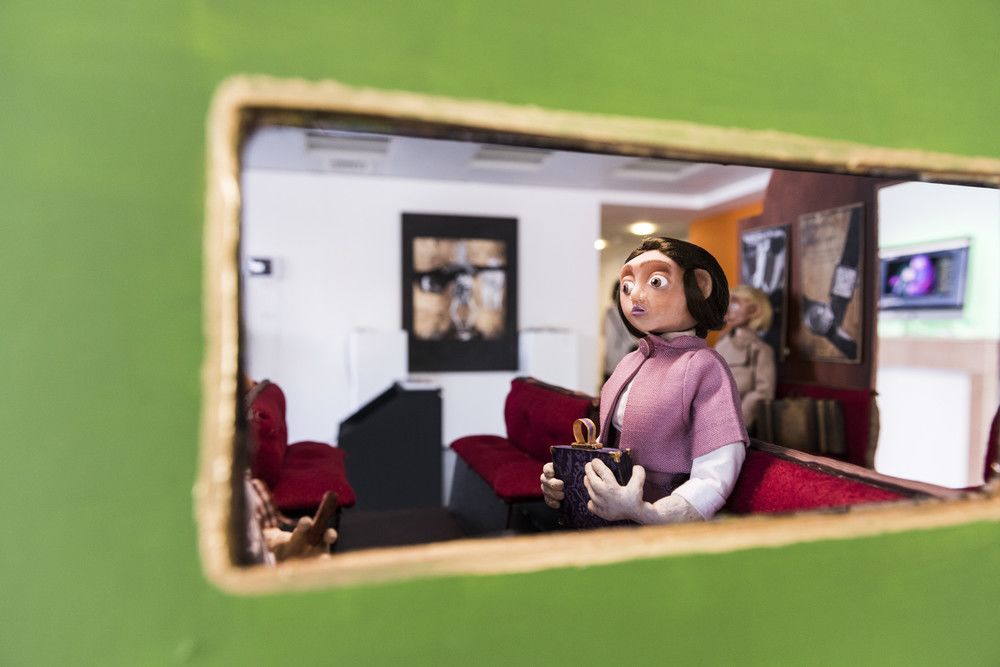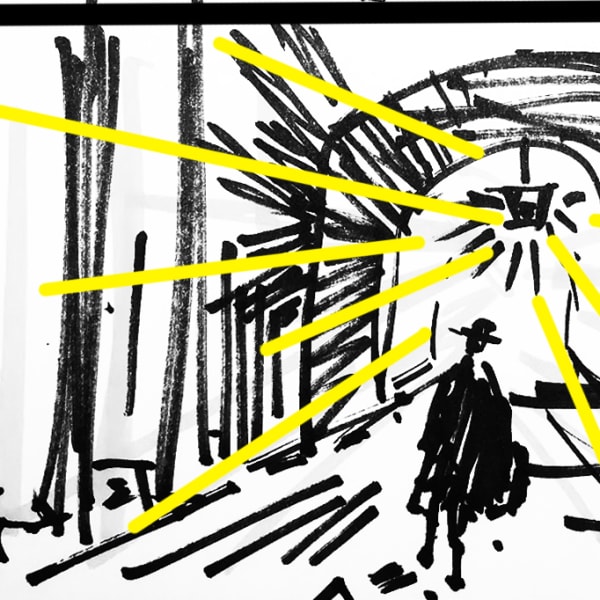
How to become an animator

- Written byMariana Jaureguilorda Beltran
- Published date 26 April 2021

So you want to become an animator?
With technology becoming more advanced across all mediums and the demand for fresh and original content growing, trained animators are needed.
In 2018, the global animation market was worth 259 billion U.S. dollars and is expected to grow to 270 billion by 2020. Animation is big business, with consumers increasingly expecting higher quality graphics in gaming, better visual effects in movies and a more immersive consumption experience wherever they go.
Being an animator is an exciting and fast-paced career, where you create collections of images to make them into moving, animated sequences. Your work could be used in a variety of platforms, purposes and fields – from fashion, tv, film, gaming to advertising.
An animator’s role involves using a variety of creative techniques to reach the final product, including drawing by hand or using digital software to create computer-generated animations.
We put together this guide covering the steps you will need to take to become an animator and how to kickstart your career in this exciting field.

1# Fall in love with animation
Before becoming an animator, you need to love it. You need to know what work you like and which work you don’t like. Read about its history, draw it out, experiment – eat, breathe and live animation.
MA 2D animation graduate and London-based 2D animator, Raffaele Gabrielli (also known as “Garptwo”) believes the first steps are knowledge and action.
“You first have to know the history of the field you want to specialize in. So when, where, and how animation was born. Which movies have been important to the evolution of this art, and why. Then watch a lot of movies. Start from the beginning. From shorts to features, from documentaries to music videos. Read about it. There are tons of books (starting from the Animator's Survival kit) that helps you understand the principle of drawing and timing. And when you have enough knowledge and confidence - do. And just keep doing. Never stop drawing. Doesn't matter if it is digital or on paper. Draw. And take part in projects or start projects yourself if you can't find any. One frame after another one.”
ICHTHYOPHOBIA (fear of fish) - Raffaele Gabrielli
Dani Marsh is a 2D animator and Illustrator and UAL Alumni. She has previously worked with Tate, Jonas blue and Emily Burns. She believes identifying which work you like to make, and experimenting are key to becoming an animator.
“The first steps to becoming an animator I’d say identify what kind of work you like to make, experiment with different ways of creating a moving image - draw, paint, stop motion, 3D, motion graphics, anything. Research different techniques and software and see what you fall in love with! If you want to become a hand-drawn 2d animator like me, drawing from life is the best tool to improve your technique rendering figures.”

2# Take animation courses or a degree program
You will need to learn all about animation. This can come from taking a degree, short courses or previous work experience. Either way, be sure to pick a program that gives you hand-on-practice with industry technology and taught by people with experience in the field.
The UK is renowned for the quality of its highly educated and trained workforce and it's nurturing of top animation talent. According to Animation UK, the animation workforce is highly qualified with 93% of workers having a degree and 26% also being post-graduates.
So, make sure to get your study hat on and stand out from the crowd!

3# Develop your skills
No matter how great your degree or course is, your instructors can only teach you so much about how to become an animator. You must put in the hard work.
Building foundational art skills and learning animation and editing software are a must but you will also want to develop acting and observation skills. Teamwork is another big one – animation projects require lots of collaboration, be ready for teamwork, feedback and critique.
With aspirations of finessing her animation skills further, Amna Albaker attended the Adobe After Effects and Animation - Beginners Online Short Course and the Adobe After Effects and Animation - Intermediate Online Short Course.
“I love the range of courses offered by UAL and the obvious quality and extensive knowledge base you can gain from that type of mentorship, especially as a beginner,” Alma explains.
She says started she dabbling in frame-by-frame animation well before attending the courses but knew doing both short courses would give her a solid foundation to develop her skills and confidence in using Adobe After Effects. Check out how our short courses can help you master the basic skills of digital animation.
Technical skills you need to become a successful animator
Broadly speaking, there are five types of animation: Celluloid animation, 2D animation, 3D animation, Motion Graphics and Stop Motion.
As you develop your skills and interests, you can gain all the different skills to become a well-rounded animator and develop your signature style.

Celluloid animation
This is the traditional hand-drawn type of animation where the artist draws thousands of images and has them photographed, frame by frame. Before the digital world, Celluloid animation was the norm.
If you enjoy traditional media, being a good illustrator can be a great skill to have.
We have courses offering an opportunity to develop your illustration, character design and cartooning skills: Digital illustration Online Short Course, Cartooning Fundamentals Online Short Course and Character Design for Beginners Online Short Course.

2D animation and 3D animation
Two-dimensional animation is about creating objects and characters in a 2D space. It means that they only have width and height.
Whereas 3D animation operates on different principles and is more akin to puppetry than traditional animation. For this, you need to learn how to digitally model a character, sculpt it and give it a skeleton that you can move and manipulate.
Lighter - Dani Marsh
Motion Graphics
This visual effect technique involves moving graphic elements such as text or logos, mostly using software such as After Effects.
Most suitable for: Those working in the advertising industry or doing multimedia projects, or even designing the opening of film titles.

Stop motion
Stop motion is similar to traditional animation, except instead of drawing, you use clay models and a set to produce animations. Stop motion can also be done with puppets, cut-outs, silhouettes and even action figures.
In the past, stop motion was used as a form of special effects for live-action films and has largely been replaced by 3D animation and visual effects work.
These days, there are filmmakers who work almost exclusively with stop-motion – think Tim Burton and films like “Coraline.”
For aspiring animators, stop motion can be a wonderful medium to make art, on your own terms. Stop motion has its own flavour that can’t be reproduced in any other medium. Understanding stop motion can also unlock a deeper appreciation for 3D animation and visual effects.
Learning to act
OK, this might sound a bit like a stretch, but animators are essentially actors.
You will have to create all the movement for each character. Learning how to act can help you understand movements and expressions that you can later use in your work.
As an animator, you'll typically be given a simple line of dialogue, and you must create all the actions and movements the character is going to take. You have to come up with the acting, and your own emotions will show through the character. If you have bad acting skills, it'll translate into bad animation.
You don’t necessarily have to take acting classes; you can also do your own research watching movies and videos.

Don’t forget about all the soft-skills
The best animators are able to combine their technical know-how with important soft skills that take their animations to the next level. To be a well-rounded professional, you need creativity, communication.
Raffaele Gabrielli believes that the two main skills you need to become an animator are curiosity and desire to create.
“You need to be curious in order to know more, see more, explore more. On other's stuff but also on your own. To experience life, to be able to translate it into a message made of a sequence of images. And you have to be unstoppable. Animation takes time. A lot of time. You have to be patient and meticulous. Find an interesting story, a nice way to tell it, and start drawing.” he told us.

4# Build a portfolio
Most employers will expect to see a portfolio of your work before hiring you. Having a standout portfolio is key.
For animators, it makes sense to host your portfolio online. Each piece you share should include a recap of the work you did and your project goals. Only share your best work, updating your portfolio and reel as you create new and stronger pieces. Don’t forget to include a contact section on your site as well as your resume and a brief overview of your background and interests.
For animation portfolio ideas, check out 15 Inspirational Motion Graphics and Animation Portfolios.
5# Gain work experience
Secure internships and freelance jobs while you are in school to gain work experience.
Even after you graduate and find a full-time role, you’re more likely to start out in an entry-level position than in a lead animator job
This experience can help you network with other like-minded people and professionals, build your skills, and continue to expand your portfolio. Put the time in to become successful!

6# Build your network!
Network, network, network! It’s not as scary as it sounds.
Professional networking is not about walking into a room full of strangers and boasting about yourself or identifying the most senior people in the room and trying to impress them. It’s about gradually building up a list of contacts while being part of a supportive ground of like-minded individuals.
“One of the best ways of getting to know people in the industry, is to go to film festivals or animation festivals,” said Oscar-nominated animator, Joanna Quinn, to the British Film Institute.
------------------------------------------------------------------------
If you are looking to kickstart your career, develop new skills or refresh the ones you already have, the short courses offered by UAL are delivered by industry experts with the overarching benefit of equipping you with skills and insights that you can easily transfer to your career or personal projects. Take a look at our upcoming summer 2021 short courses as well as our range of online courses to find out how they can help you.
We also offer a wide range of unique courses for kids and teens aged 11 to 18 years-old, including within animation and graphic design, who wish to explore their creativity.
